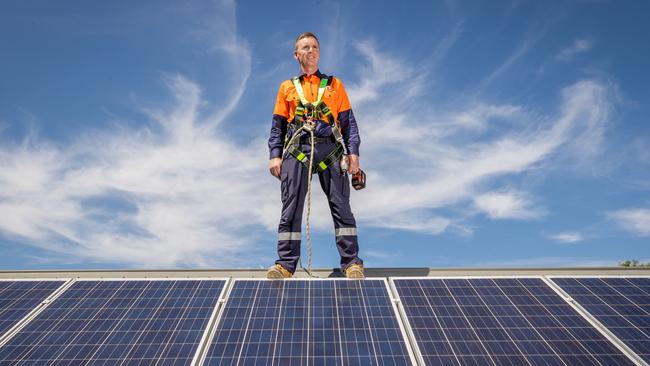How many planeloads of political staffers does it take to spend $1bn? Far too many, apparently
No one believes this green energy revolution will provide anything like the number of jobs or the salaries as currently exist in mines and power plants, writes James Morrow.
Opinion
Don't miss out on the headlines from Opinion. Followed categories will be added to My News.
This week’s controversy over the Prime Minister, Chris Bowen and the two jets to the Hunter Valley raises a couple of very important questions.
First of all, just how many ministers and their staff does it take to stand up and read a media release?
There’s an old saying that says cocaine is God’s way of saying you have too much money.
Perhaps the political equivalent is, if your travelling staff can’t fit on a Dassault Falcon (capacity 19 passengers!) your entourage is too big.
But let’s forget for a moment the optics of Anthony Albanese, Chris Bowen, and Ed Husic jetting into the Hunter Valley on a pair of Dassault Falcons like the second coming of Taylor Swift.
Instead let’s talk about the second and much bigger question, namely, what the trio was doing up in the Hunter in the first place.

Rather than something fun and harmless like hitting a few wineries, the three were there dropping – er, sorry, “investing” – as much as $1bn of taxpayer money to try and get a solar panel manufacturing industry up in Australia.
Now, taking not one but two private jets to the Hunter Valley to announce the opening of a new front in the fight against global warming has more than faint echoes of Soviet commissars gorging themselves on caviar while everyday citizens wait on bread lines.
But that’s not the worst of it.

Officially, the trip was to announce as much as $1bn in funding for the “Solar Sunshot” program which aims to “support innovative manufacturing facilities in Australia across the solar supply chain.”
If that sounds to like the whole thing was dreamt up by Utopia-style Canberra bureaucrats with their lanyards done up too tight, you’d be correct.
Hilariously, even the name “Sunshot” is borrowed from an Obama-era program launched in the US in 2011.
But it is not hard to discern the deeper politics here.
Peter Dutton’s push to put nuclear on the table is suddenly forcing renewables advocates to show their maths on whether or not the net zero transition really stacks up.
Already, in his Jack Russell-esque pursuit of net zero, Mr Bowen has been caught out lowballing the cost of the program in the face of questions like, hey, where’s that $275 energy bill cut you promised?

Meanwhile, no one believes that this green energy revolution will provide anything like the number of jobs or the salaries that go with them as currently exist in mines and power plants.
Jennie George, former Labor MP and ACTU boss, recently raised the alarm.
She told The Australian that she examined her own party’s claims about the coming renewables jobs bonanza and found the numbers did not stack up.
Ms George also said she was worried about rural communities that were being forced to accept big projects and transmission lines running across their land, ostensibly to save the planet.
“I realised it was all about the target. That the target was more important than anything and it doesn’t matter who gets in the way,’’ she said.
“The party that was formed to give political expression to the needs of working people has allowed the light on the hill to dim.”
Beyond the jobs, the economics of a billion dollar fund to encourage solar manufacturing raises another question.
If renewables like solar are the future, and there is going to be so much money in them, why does the government need to prime the pump?
Surely investors would be kicking down doors to invest and set up factories.
But with so much money involved, it is hard not to be cynical that this is not just another rent-seeking push by renewables investors.
Particularly when names like AGL and Mike Cannon-Brookes are said to be circling the new pool of funds.
Remember, most solar panels here are made in China, and Chinese manufacturers have a number of advantages – if they can be called that – which locals don’t.
Labor is cheap in China, and the US Department of Labor has called out Beijing for allowing forced labour (also known as slavery) to enable polysilicon production.
Likewise, Chinese manufacturers don’t have to worry about little things like the environment like they do in Australia.
In 2021 a Harvard Business Review study found that “the economics of solar (will) darken quickly as the industry sinks under the weight of its own trash.”
On the other hand Australian manufacturers, quite rightly, have to pay proper wages and clean up their messes.
All of which suggests that this is less about creating a booming solar industry and more about shoring up support in industrial regions and with the green investor class.
Do you have a story for The Daily Telegraph? Message 0481 056 618 or email tips@dailytelegraph.com.au





